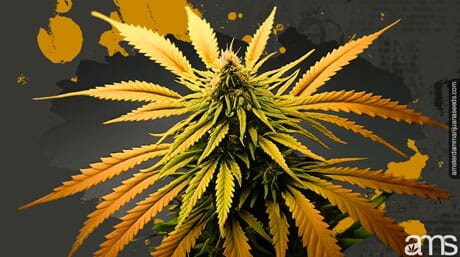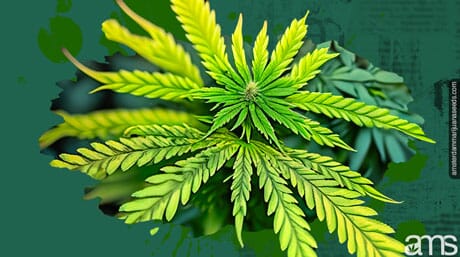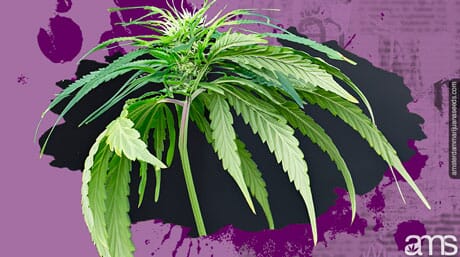Introduction
Growing cannabis can be a rewarding experience, but it also comes with its share of challenges, especially when it comes to managing temperature extremes. Whether you’re facing scorching outdoor temperatures or dealing with heat buildup in your grow room, understanding how to protect your cannabis plants from excessive heat is crucial. As an experienced cannabis grower working with Amsterdam Marijuana Seeds, I’ve encountered and overcome various temperature-related obstacles. In this comprehensive guide, I’ll provide you with valuable insights on managing excessive temperatures and ensuring the health and vitality of your cannabis crops.

Is Too Much Sun Bad for Cannabis?
While cannabis plants love sunlight, excessive exposure to the intense sun can be detrimental. High temperatures and intense light can lead to heat stress and light burn, causing damage to the plant’s leaves and overall growth. To prevent this, consider providing partial shade during the hottest parts of the day or using light diffusing materials to protect your plants from excessive sun exposure.
How Hot is Too Hot for Cannabis?
Cannabis plants have a preferred temperature range of 70°F to 85°F (21°C to 29°C). When temperatures exceed this range, the risk of heat stress and potential damage to your plants significantly increases. Keep a close eye on the thermometer and intervene promptly if temperatures start to soar beyond the ideal range.
What Does an Overheated Cannabis Plant Look Like?
An overheated cannabis plant displays several distinctive signs. The leaves may appear droopy, wilted, or curled, and their edges may turn yellow or brown. Overheating can also cause stunted growth and give the plant an overall stressed and unhealthy appearance.

Does Heat Hurt Cannabis?
Yes, excessive heat can hurt cannabis plants. High temperatures can disrupt the plant’s metabolic processes, reduce nutrient uptake, and lead to wilting and leaf burn. If not addressed promptly, prolonged exposure to high heat can severely impact plant health and overall yield.
What Does Light Burn Look Like on Cannabis?
Light burn, also known as light stress, occurs when cannabis plants are exposed to intense light, particularly from high-powered artificial lighting systems. The affected leaves may show bleached or yellow areas, and the tips may appear burnt. Adjusting the light distance and intensity can prevent light burn.
What Are the Symptoms of High Temperature on Plants?
High temperatures can manifest in various ways, including wilting, drooping, leaf discoloration, and overall growth stunting. If the plant’s environment becomes excessively hot, its ability to take in nutrients and water may also be compromised.

How Do You Tell if a Plant is Burned?
A burned plant will have visible signs of damage on its leaves, such as brown or yellow patches. The tips of the leaves may also appear burnt or crispy. Adjusting the growing conditions and providing appropriate care can aid the plant in recovering from burns.
| Visible Signs of Damage | Description |
|---|---|
| Brown or Yellow Patches on Leaves | Leaves show visible spots of brown or yellow discoloration. |
| Burnt or Crispy Leaf Tips | The tips of the leaves appear burnt or crispy. |
| Recovery Measures | Adjust growing conditions and provide appropriate care to aid the plant’s recovery from burns. |
Can a Plant Recover from Heat Stress?
Cannabis plants are resilient and can recover from heat stress if the issue is addressed promptly. Moving the plant to a cooler location, providing adequate hydration, and optimizing environmental conditions can help the plant bounce back from heat stress.
How Do You Save a Plant That Got Too Hot?
To save a plant that has experienced extreme heat, act swiftly and implement the following steps:
Move the plant to a cooler location with sufficient shade.
Ensure the plant is adequately watered, as heat stress can lead to dehydration.
Create a conducive environment by reducing temperatures and providing good airflow.
Monitor the plant closely for signs of improvement or further stress.
How Do Plants Keep Cool?
Plants employ various mechanisms to stay cool and regulate their internal temperature:
Transpiration: The process by which plants release water vapor through their stomata helps cool the plant.
Leaf Orientation: Some plants orient their leaves to reduce direct exposure to intense sunlight, minimizing heat absorption.
Root Systems: An efficient root system allows plants to draw water from deeper soil layers, mitigating the effects of heat stress.

What are Four Ways to Prevent Heat Stress in Plants?
To prevent heat stress in cannabis plants, consider the following strategies:
Shade and Ventilation: Utilize shade cloth or other materials to protect plants from excessive sunlight during peak hours. Additionally, ensure proper ventilation to dissipate excess heat.
Watering Schedule: Maintain a consistent watering schedule, especially during hot weather, to keep the plants hydrated and healthy.
Mulching: Apply organic mulch around the base of plants to help retain soil moisture and regulate temperature.
Choosing Suitable Strains: Opt for cannabis strains that are more tolerant of higher temperatures, especially if you’re cultivating outdoors in a hot climate.
How Do Plants Protect Themselves from Heat?
Plants have evolved several defense mechanisms to protect themselves from heat stress:
Heat Shock Proteins (HSPs): These proteins are produced in response to stress and help the plant recover and maintain cellular integrity.
Antioxidants: Plants produce antioxidants to neutralize harmful free radicals generated during high-temperature stress.
Closing Stomata: In response to heat, plants may close their stomata to reduce water loss through transpiration.
How Do You Control Plant Temperature?
Controlling plant temperature involves careful management of the growing environment. Here are some effective ways to do so:
Use Temperature-Controlled Growing Spaces: In indoor settings, invest in equipment such as air conditioners, fans, and heaters to maintain optimal temperatures.
Shading and Ventilation: In outdoor settings, use shading materials and ensure adequate ventilation to regulate temperature.
Water Management: Proper watering practices can help moderate temperature fluctuations in the soil and improve overall plant health.

What Does Heat Stress Do to Buds?
Heat stress during the flowering phase can significantly impact bud development and quality. It may lead to foxtailing, a condition where the buds produce elongated, spiky calyxes, reducing overall bud density and potency.
How Hot is Too Hot for Flowering?
During the flowering phase, temperatures above 85°F (29°C) can adversely affect bud formation and potency. It’s essential to maintain moderate temperatures during this crucial stage to achieve optimal yields and high-quality buds.
Conclusion
As a cannabis grower, understanding how to manage excessive temperatures is essential for maintaining healthy, thriving plants. Whether you’re growing indoors or outdoors, implementing the right cooling strategies and prevention techniques will help you overcome heat-related challenges and achieve successful cannabis cultivation. By closely monitoring your plants, providing appropriate care, and optimizing the growing environment, you can ensure your cannabis crop thrives even in the face of extreme temperatures.
Frequently Asked Questions
Yes, air conditioners are an effective way to regulate temperature in indoor grow rooms, providing a comfortable environment for your cannabis plants.
It’s best to mist your plants early in the morning or late in the evening to avoid moisture-related issues during the hotter parts of the day.
Cannabis thrives in temperatures between 70°F to 85°F (21°C to 29°C) during the day and slightly cooler temperatures at night.
Yes, heat stress during the flowering phase can impact bud development, potentially leading to reduced potency and altered cannabinoid profiles.
- SEO Powered Content & PR Distribution. Get Amplified Today.
- PlatoData.Network Vertical Generative Ai. Empower Yourself. Access Here.
- PlatoAiStream. Web3 Intelligence. Knowledge Amplified. Access Here.
- PlatoESG. Carbon, CleanTech, Energy, Environment, Solar, Waste Management. Access Here.
- PlatoHealth. Biotech and Clinical Trials Intelligence. Access Here.
- Source: https://amsterdammarijuanaseeds.com/blog/post/managing-excessive-temperatures-for-successful-cannabis-cultivation
- :has
- :is
- :not
- :where
- 33
- 35%
- 7
- a
- ability
- above
- Achieve
- Act
- Additionally
- addressed
- adequately
- adjusting
- adversely
- affect
- affected
- Aid
- AIR
- allows
- also
- altered
- amsterdam
- an
- and
- appear
- Apply
- appropriate
- ARE
- areas
- around
- artificial
- AS
- At
- avoid
- back
- Bad
- base
- BE
- becomes
- BEST
- between
- Beyond
- Bounce
- brown
- buds
- burn
- burned
- burns
- but
- by
- CAN
- Cannabinoid
- cannabis
- cannabis strains
- care
- careful
- Cause
- causing
- cellular
- challenges
- Climate
- Close
- closely
- Collapse
- comes
- comfortable
- comprehensive
- Compromised
- condition
- conditions
- Consider
- consistent
- control
- Cool
- create
- crop
- crops
- crucial
- cultivation
- damage
- day
- dealing
- deeper
- Defense
- density
- detrimental
- Development
- direct
- displays
- Disrupt
- distance
- distinctive
- do
- does
- draw
- during
- Early
- Effective
- effects
- efficient
- ensure
- ensuring
- Environment
- environmental
- equipment
- especially
- essential
- Even
- evening
- evolved
- exceed
- excess
- excessive
- excessively
- experience
- experienced
- exposed
- Exposure
- extreme
- extremes
- eye
- Face
- facing
- fan
- fans
- fluctuations
- following
- For
- formation
- four
- Free
- from
- further
- generated
- Give
- good
- got
- Grow
- Growing
- Growth
- guide
- harmful
- Have
- Health
- healthy
- help
- helps
- her
- here
- High
- high-quality
- higher
- HOT
- hottest
- HOURS
- How
- How To
- HTTPS
- Hurt
- hydration
- i
- ideal
- if
- Impact
- implement
- implementing
- improve
- improvement
- in
- Including
- Increases
- Indoor
- insights
- integrity
- internal
- intervene
- Invest
- involves
- issue
- issues
- IT
- ITS
- jpg
- Keep
- keeping
- known
- Late
- layers
- lead
- leading
- light
- Lighting
- like
- ll
- location
- Look
- look like
- loss
- love
- maintain
- maintaining
- manage
- management
- managing
- marijuana
- materials
- May..
- mechanisms
- metabolic
- minimizing
- mitigating
- moderate
- Monitor
- monitoring
- more
- morning
- moving
- much
- night
- obstacles
- of
- on
- optimal
- optimizing
- or
- organic
- Other
- Outdoor
- outdoors
- overall
- Overcome
- particularly
- parts
- Patches
- Peak
- phase
- plant
- plants
- plato
- Plato Data Intelligence
- PlatoData
- potency
- potential
- potentially
- practices
- preferred
- prevent
- Prevention
- process
- processes
- produce
- Produced
- Profiles
- proper
- protect
- Proteins
- provide
- providing
- quality
- range
- RE
- Recover
- recovering
- recovery
- reduce
- Reduced
- reducing
- Regulate
- release
- resilient
- response
- retain
- rewarding
- right
- Risk
- Room
- Rooms
- root
- s
- Save
- schedule
- seeds
- SELF
- settings
- several
- severely
- Share
- show
- showing
- significantly
- Signs
- So
- soil
- some
- spaces
- spots
- Stage
- start
- stay
- Steps
- Strains
- strategies
- stress
- successful
- such
- sufficient
- suitable
- Sun
- sunlight
- swiftly
- Symptoms
- system
- Systems
- table
- Take
- techniques
- tell
- that
- The
- their
- themselves
- These
- this
- thrives
- thriving
- Through
- tips
- to
- too
- TURN
- understanding
- uptake
- use
- using
- utilize
- Valuable
- various
- Ve
- visible
- Vitality
- Water
- watering
- Way..
- ways
- Weather
- weed
- What
- when
- whether
- which
- will
- with
- working
- yellow
- yes
- Yield
- yields
- you
- Your
- zephyrnet








